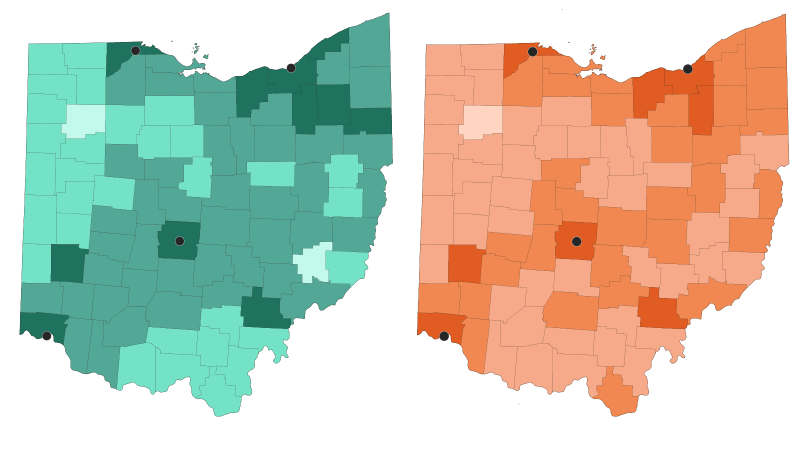Ohio on Tuesday night became the latest state to protect reproductive rights in its state constitution — joining California, Vermont and Michigan. It is the first and only state under full Republican legislative control to do so, signifying a growing disconnect between Ohio voters and the state’s Republican leadership, including Gov. Mike DeWine who signed a “heartbeat bill” banning abortion at around six weeks into law in 2019.
This comes months after a special election where 57% of Ohio voters rejected an initiative that would’ve raised the threshold to amend the state constitution from a simple majority to 60%. Although the measure was not directly about abortion, it served as a proxy battle for abortion rights in the state.
Here are four charts that illustrate how the election in August foreshadowed the result in last night’s abortion ballot measure.
Ohio voters’ decision to protect the right to abortion in the state constitution overrides a six-week ban that was briefly in effect following the overturn of Roe v. Wade and has since been blocked by an injunction.
Abortion is currently legal through 22 weeks in Ohio and banned with limited or no exceptions in surrounding states including Indiana, Kentucky and West Virginia.
Support for protecting abortion was strongest in Ohio’s most populous counties, including Cuyahoga and Franklin County, home to Cleveland and Columbus, respectively. The results for the abortion ballot measure on November 7 mirror the outcome of the special election in August — counties that voted strongest against raising the threshold to amend the state constitution also showed strong support for establishing a constitutional right to abortion.
Following the special election, abortion rights advocates ramped up advertising efforts and far outspent their opponents in the general election. Abortion rights proponents spent nearly $25 million on advertising in favor of the measure, according to recent data from AdImpact. In comparison, opponents spent $16.3 million.
Abortion proved to be a big motivator for Ohio voters during the off-year special election in August — which otherwise might’ve passed by under the radar. Voters turned out in droves to defeat the measure that would have altered the state’s amendment process. Over three million votes were cast for the issue, according to the Ohio Secretary of State, compared to the 2.4 million votes that were recorded in 2017, the last off-year general election with state-wide ballot measures.
Even more Ohio voters turned out for the general election, with abortion on the ballot bringing in 3.9 million votes.
Read the full article here



